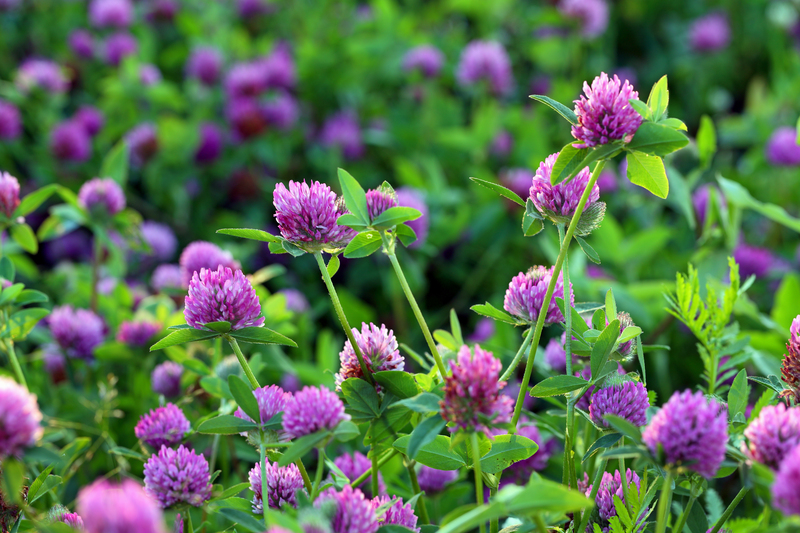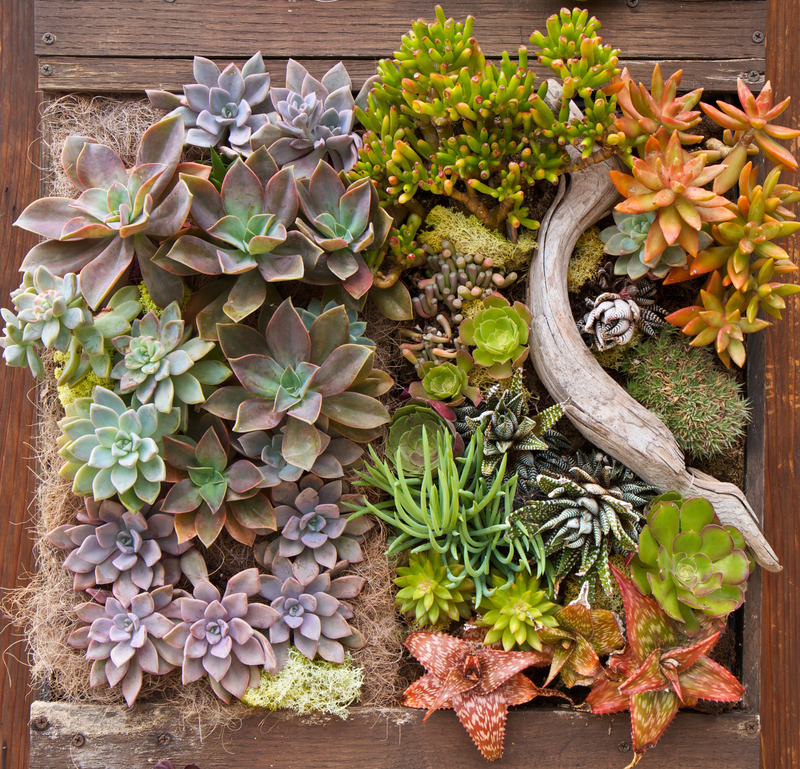Delight in Orchid Care from Root to Petal
Posted on 17/09/2025
Delight in Orchid Care from Root to Petal
Orchids are cherished worldwide for their exquisite beauty, unique forms, and enduring blooms. Cultivating these stunning plants is a rewarding hobby that brings tranquility and vibrancy into any space. Whether you're a passionate collector or a beginner wishing to add exotic flair to your home, delighting in orchid care from root to petal is essential to ensure your plants not only survive but truly thrive. In this detailed guide, we'll explore every aspect of orchid maintenance, from understanding their roots to nurturing splendid blossoms.
Understanding Orchid Basics: Nature's Masterpieces
To truly delight in orchid care, it's important to understand the nature and needs of orchids. These remarkable plants belong to the family Orchidaceae, one of the largest plant families, containing over 25,000 species and more than 100,000 hybrids. Orchids are found in diverse habitats worldwide, from tropical rainforests to arid deserts, making them highly adaptable and varied.
- Epiphytic Orchids: Most popular houseplant orchids, like Phalaenopsis, grow attached to tree branches, extracting moisture and nutrients from the air and debris.
- Terrestrial Orchids: These grow in soil, often found in temperate regions, and have special cultural requirements.
- Lithophytic Orchids: These intriguing varieties grow on rocks and stone outcrops.
Understanding your orchid's origins allows you to better mimic its natural environment and tailor orchid care from root to petal for robust growth.

Choosing the Right Orchid: Setting Yourself Up for Success
Not all orchids are created equal--some are easy companions for beginners, while others demand more precise care. The delight of orchid care starts with picking the right variety. Here are some popular and resilient choices for home growers:
- Phalaenopsis (Moth Orchid): With their graceful sprays and generous blooms, these orchids are ideal for beginners.
- Cattleya: Known for their vivid colors and fragrant, large flowers.
- Dendrobium: Hardy and adaptable with a wide variety of shapes and colors.
- Oncidium (Dancing Lady): Delicate, airy spray of yellow flowers, perfect for bright spots.
- Paphiopedilum (Lady's Slipper): Exotic, pouch-like blooms, especially suited to intermediate growers.
Beginning with a robust, healthy plant sets you on the path to successful orchid care and pure delight from root to petal.
Orchid Roots: The Unsung Heroes
Thriving orchids start with healthy roots. Unlike typical houseplants, many orchids have thick, succulent roots that absorb not only water but also atmospheric nutrients. Healthy roots are plump, firm, and white or green, turning silvery-gray when dry.
Care Tips for Orchid Roots
- Avoid Overwatering: Roots are prone to rot if the medium stays soggy. Allow the growing medium to partially dry before rewatering.
- Use the Right Potting Mix: Most houseplant orchids thrive in well-draining mixes made of bark, sphagnum moss, perlite, and charcoal.
- Repot Regularly: Typically every 1-2 years, especially if roots begin to escape the pot or the medium decomposes.
- Inspect Frequently: Healthy roots mean a healthy plant. Trim away mushy, brown, or black roots with sterile scissors to prevent disease spread.
Paying close attention to roots is a fundamental aspect of orchid care from root to petal.
Optimal Light for Orchids: Illuminating Their Natural Beauty
Light is one of the most critical factors in orchid health. Too little light stalls blossom development, while too much leads to scorched leaves. Achieving the right balance is the secret to delighting in orchid care.
Light Requirements Based on Orchid Type
- Phalaenopsis: Medium to bright indirect sunlight. East-facing windows are ideal.
- Cattleya: Bright, filtered sunlight. West or south windows are best, with sheer curtains to diffuse harsh rays.
- Dendrobium: Bright light, avoiding direct midday sun.
A simple leaf test helps determine if your orchid is getting enough light. Healthy leaves should be a bright, medium green. Dark green leaves may indicate insufficient light, while yellowish tones or red edges mean there's too much.
Watering Orchids: Mastering the Moisture Balance
Watering is an art form in orchid care. Overwatering is a leading cause of orchid decline, while under-watering can leave roots shriveled.
Essential Orchid Watering Tips
- Check First: Before watering, stick your finger or a wooden stick into the potting medium about an inch deep. Water only when it feels dry.
- Water Thoroughly: Water until it runs freely from the pot's drainage holes, ensuring all roots get hydrated.
- Morning Watering: Always water in the morning to let foliage dry before evening, reducing the risk of disease.
- Quality Matters: Use room-temperature water, and if possible, rainwater or filtered water to avoid salt buildup.
Finding your orchid's specific needs and adjusting for seasons or environmental shifts is key for exceptional orchid care from root to petal.
Feeding Orchids: Fertilizing for Flourishing Blooms
Orchids need food, but in moderation. Over-fertilizing will do more harm than good, so it's best to err on the side of less. Special orchid fertilizers are best, but a general balanced fertilizer diluted to one-quarter strength also works.
Key Points for Orchid Fertilization
- Feed Weekly, Weakly: Fertilize at one-quarter strength every week during active growth. Reduce feeding during dormancy.
- Flush Monthly: Once a month, skip fertilizer and flush the pot with plain water to wash away salt deposits.
- Choose the Right Blend: Look for fertilizers labeled 20-20-20 or a similar balanced ratio. Some prefer "bloom boosting" blends during flowering periods.
Proper orchid care from root to petal ensures not only gorgeous leaves, but abundant and long-lasting flowers.
Humidity and Air Circulation: Freshness Matters
Orchids are native to environments with high humidity and gentle breezes. Indoor air can be dry, especially with central heating or air conditioning on.
- Maintain Humidity: Aim for 40-60% humidity. Use a humidity tray, mist plants gently, or use a room humidifier.
- Ensure Good Air Flow: Place a small fan nearby (not blowing directly on the plants) to prevent stagnant conditions, which lead to disease.
These conditions closely replicate an orchid's natural habitat and are crucial for standout orchid maintenance from root to petal.
Orchid Blossoms: The Pinnacle of Plant Beauty
Orchid blooms are what growers most anticipate and admire. With proper care, many orchids bloom at least once annually, some boasting flowers that last for several months.
Encouraging and Prolonging Orchid Blooms
- Follow Correct Light & Feeding Schedules: Many orchids will not bloom without the right combination of light and nutrients.
- Provide Temperature Variation: A 10-15 degree drop in temperature at night encourages many varieties to initiate flower spikes.
- Be Patient: Some species require a dormant rest period before re-blooming. Avoid overwatering and fertilizing at this stage.
Caring for blooms: Always handle flower spikes gently, support them with stakes if necessary, and remove faded flowers to direct energy back to the plant. This integral step crowns your orchid care from root to petal journey.
Pruning and Propagation: Supporting Orchid Longevity
Good orchid care doesn't end with flowering. Pruning spent flower spikes and propagating healthy new plants are part of the cycle.
- Trimming Spent Spikes: Cut just above a node (the swollen bump) to sometimes encourage a secondary bloom, especially in Phalaenopsis orchids.
- Repotting and Propagation: Divide mature plants during repotting, ensuring each division has 3-4 healthy pseudobulbs or growth points.
- Keiki Development: Some orchids produce baby plants or "keikis" on their flower spikes, which can be potted up once roots develop.
Propagation rejuvenates older plants and multiplies your collection, adding even more delight to orchid growing from root to petal.
Troubleshooting Common Orchid Issues
Even the most attentive growers encounter issues. Here's a quick guide to diagnosing and addressing common complaints:
- Yellow Leaves: Often a sign of overwatering or exposure to too much sunlight.
- Wrinkled Leaves: Indicates dehydration or root issues.
- No Blooms: Usually due to insufficient light or lack of temperature fluctuation at night.
- Pest Problems: Look for mealybugs, spider mites, or scale; treat with neem oil or insecticidal soap.
- Root Rot: Mushy brown or black roots signal rot; trim affected roots and repot in fresh medium.
Addressing problems early is key to delighting in orchid maintenance from the roots right up to the final petal.

Creating a Lasting Orchid Habitat: The Joy of Everyday Care
Caring for orchids is a journey of patience, observation, and profound satisfaction. Incorporate their needs into your daily routine:
- Observe your plants daily for signs of stress or new growth.
- Enjoy gentle misting and cleaning of leaves for both health and shine.
- Share your orchids with others--swap tips, propagate, and delight together in the successes and lessons along the way.
Final Thoughts: Delight in Every Stage of Orchid Care
Orchid care, from root to petal, is an invitation to slow down, connect with nature, and witness the marvel of transformation. With each new leaf and spectacular bloom, you'll find yourself more enchanted by these remarkable plants. Mastering orchid care from root to petal ensures not only healthy, beautiful flowers but a richer, greener home and a lasting sense of accomplishment. Delight in your orchid journey--one root, one leaf, one petal at a time.
Ready to begin? Embrace the world of orchid growing and care, and let your passion blossom into a vibrant collection of nature's most extraordinary flowers!

